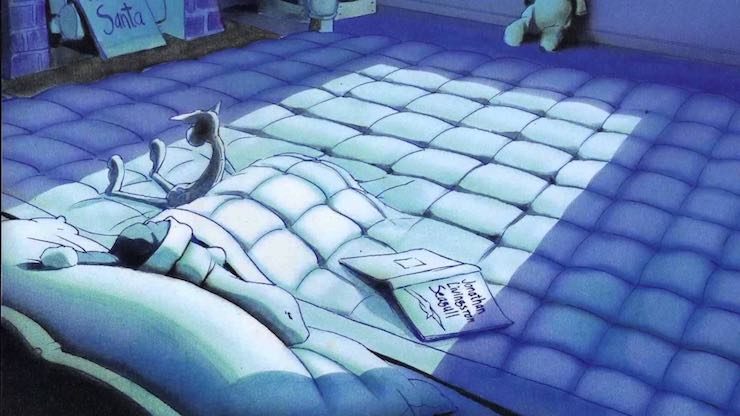What does Santa Claus represent?
Christmas is a fascinating amalgam of a holiday made up of a great big storm of European traditions, so there is obviously more than one answer to this question. But when the holiday blues set in and it feels like there is nothing more to Christmas than fighting with relatives and struggling to find perfect gifts, it’s as good a time as any to remember what Santa Claus really brings us every December: Magic.
Origins of Saint Nicholas and Sinterklaas and maybe Odin aside, the modern day lore around Santa Claus can be just as captivating… but it often gets lost this time of year. We’re all so caught up in the bustle and frenetic energy that encompass the season, everything around it fades into a cacophony of carols that we wish we didn’t have to listen to in the mall. Are the greeting cards out? Can I even send cards this year? Can I find everyone on my list something that they’ll love and won’t regift the next day? How many parties do I have to attend? How much money have I already spent? Am I making the eggnog this year or the pie or the ham? It seems that the older we get the more the stresses pile on, determined to sap the enjoyment out of something that used to be suffused with excitement and tradition and safety.
The mythology of Santa Claus was always important to me personally; as a kid who never attended religious gatherings of any kind, Santa Claus was pretty much the point of Christmas. It took me some years of distance to actually notice the investment I had in Santa as a figure, a cultural fulcrum that I had hung so many hopes and dreams upon as a child. In an effort to work it out, I thought back over all of my favorite stories featuring the jolly old guy and finally cracked the code: In every one, Santa brought magic into people’s lives, not gifts.

I’ve written about my love for The Polar Express around these parts before; needless to say that book by Chris Van Allsburg probably shaped this expectation in me. The idea that a bell from Santa’s sleigh could only be heard by people who truly believed in the existence of Santa’s Workshop at the North Pole? That this was the item a young protagonist would ask for upon being granted the First Gift of Christmas? It made the holiday about something very different for me. It was about asserting my own belief in favor of magic in my life. It became less ephemeral and turned toward the tangible, something I could grasp and control for myself. No one could make me believe in the North Pole—I had to make the decision on my own, and properly-addressed gifts under a douglas fir tree had nothing to do with that.
The Christmas classic Miracle On 34th Street has much the same message. The character of Kris Kringle—the real Santa Claus—becomes the hired Santa for Macy’s Department Store because he notes that their current actor is drunk on the job. While consumerism is still at the heart of the tale, taking place in one of New York’s most famous holiday shopping destinations and dealing with a tidal wave of parents anxious to get the right toys for their children, all the basic themes center around love and connection and the power of belief. Kringle’s honesty in his position as the Macy’s Santa leads to him recommending that customers go to the rival department store Gimbels when they have a better product (because the real Santa would never mislead you on quality at the very least). This policy leads to a reconciliation between the owners of each department store, two men who should have buried the hatchet long ago.
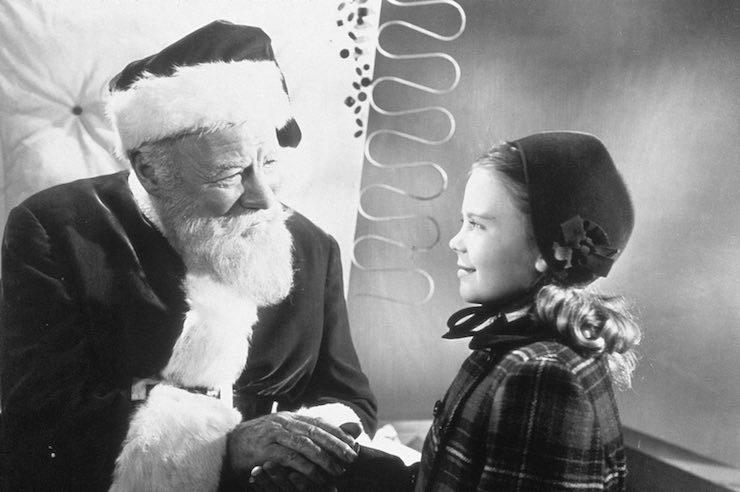
Then there is Kringle’s friendship with the Macy’s event director Doris and her daughter Susan, a girl who stopped believing in fairy tales well ahead of schedule. While the storytelling tropes here are pretty dated—we’re supposed to buy that a mother would take issue with her child believing in any form of fantasy because of a bad divorce—Susan’s journey in the film is all about her taking up the mantle of the believer. She tells Kringle that she wants a house, which seems a tall order even for a Christmas wish, but houses are commonly code where kids are concerned. What Susan truly wants is a home, and by the end she gets her wish; her mother is going marry the lawyer Fred Gailey and he decides to buy Susan’s dream house thanks to a helpful nudge in the right direction (a driving route suggested to avoid traffic) by Santa Claus. Again, belief in something magical is what drives the story—Santa cannot make your heart’s desire appear out of thin air, but he can set the world to rights when you don’t close yourself off to the possibilities.
Even The Nightmare Before Christmas seems intent on billing Santa as a truth-teller and bringer of joy rather than a purveyor of stuff. While he spends his time in our world undoing Jack Skellington’s damage and delivering the right gifts to children all over the world, his time in Halloween Town is spent grumbling at the Pumpkin King for refusing to listen to Sally (his secret one true love), then returning before the night is through to deliver their very first snowfall. His idea of a gift to the oddballs of Halloween Town is a new experience, something that they can share with each other and play games in.
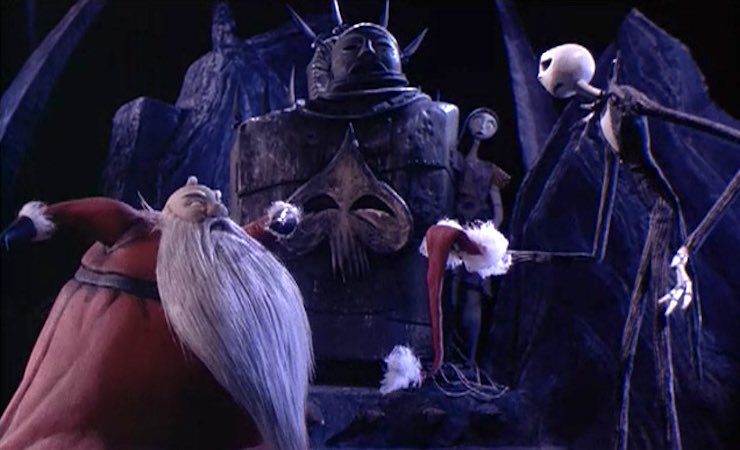
Another unlikely addition to my personal Christmas mythos is none other than The Santa Clause. Admittedly, I was not much of a Tim Allen or Home Improvement fan as a kid, but I was still completely captivated by the idea of “Santa” being a legitimate occupation that had to be undertaken by any old citizen should they find the sleigh unattended. Scott Calvin accidentally takes on that role when his son asks him to put on the former Santa’s suit and get in his sleigh. On arriving at the North Pole, Calvin admits to the elf Judy that he doesn’t not believe what he is seeing. Judy counters by telling him that children don’t need to see the North Pole to know it exists… they simply know it.
The concept of engaging with the magic of Christmas is elevated to an actual form of faith in this narrative, one that deliberately steps away from the focus on things; Scott’s ex-wife and her second husband later relate stories of when they stopped believing in Santa, and for both of them it was due to not getting an expected gift. Their focus on the material aspect of Christmas is what ultimately robs them of their belief as small children. Scott’s son Charlie never loses that faith because for him, Christmas is forever transformed into a time and place where he is finally able to connect with his father. Christmas is truly about family because Christmas is his family.
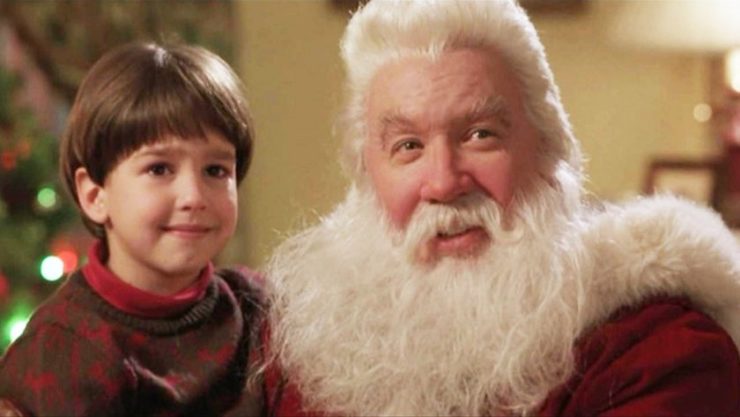
The final tale that always ran near and dear to my heart came from “Bloom County” author Berkeley Breathed, starring the ever hopeful penguin Opus: A Wish for Wings That Work. The picture book was transformed into an animated special on the same year that it was released, but I always preferred the printed version (and apparently so did Breathed). Opus spends the start of the tale depressed over his inability to fly despite having wings. He tries to build a machine that will do the job to no avail and eventually makes a Christmas wish for “wings that will go.” On Christmas Eve, Santa happens to crash into the lake near Opus’s house. Being a natural swimmer, Opus gets Santa to safety but a thankful Mr. Claus still can’t make the penguin’s wings do what they weren’t built to do. The next morning, Opus wakes to a true Christmas miracle—a cadre of ducks who thank him by picking him up as they take flight, granting his Christmas wish.
No sack full of artfully written letters could have made Opus fly—Santa does not simply wave wands and make things happen. Opus gets his wish by hoping as hard as he can, staying proactive, and being a good and helpful soul. His wish is not for a thing, but a desire to experience something completely beyond his scope of understanding, and he achieves it by performing a sort of reverse-Christmas, if you will; doing something for Santa Claus, rather than expecting something from him. Santa provides the magic needed to make it all happen by giving Opus the opportunity to earn what he so dearly wants.
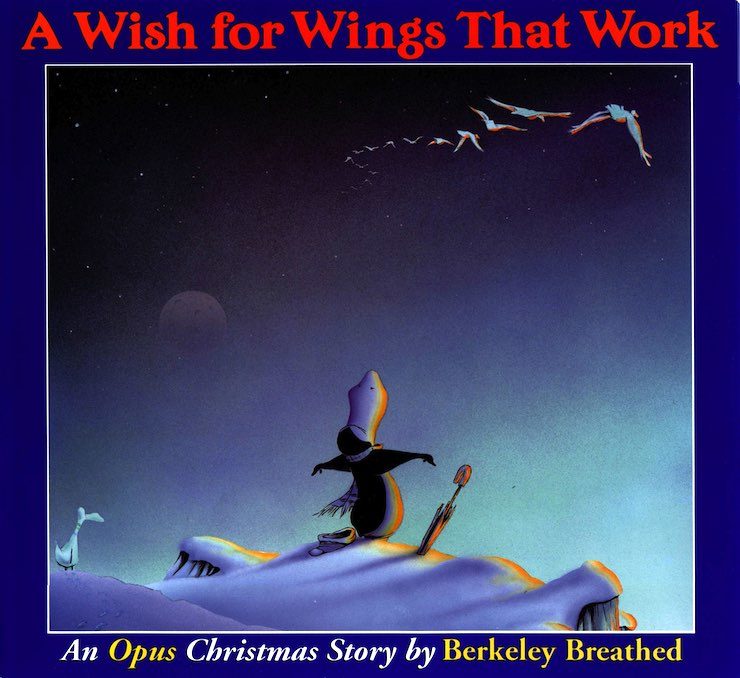
And the next morning, he can fly.
These were the tales that shaped my views of the holiday, and they are the ones I return to every time I feel myself turning cynical. When the world seems bleak and the widows are dark by 5pm, I shuffle home to bake a batch of cookies and remember that Santa Claus is not coming to town to bring me a sack of stuff to clutter my walls with—
—he’s a wizard who stops by once a year to help reignite my wonder for the world.
This article was originally published in December 2016.
Emmet Asher-Perrin would also like wings that work, please. You can bug her on Twitter and Tumblr, and read more of her work here and elsewhere.










